Think you need years of music training to write a song? Think again. Some of today’s biggest artists started with nothing but raw emotion and a simple melody.
Many successful musicians began by recording simple songs on their phones, writing their first lyrics as young teenagers, or creating hit tracks right in their bedrooms – all without fancy equipment or formal training.
The truth is, songwriting is more accessible than most people realize. You don’t need expensive gear or music theory knowledge – just a way to capture your ideas, some basic structure, and emotions worth sharing.
In this guide, we’ll break down the songwriting process of how to write a song with no experience into simple steps anyone can follow.
We’ll show you how to convert your feelings into lyrics, create catchy hooks, and build a complete song – even if you’ve never written music before.
Is Writing a Song with No Experience Even Possible?

You might think that writing a song is something only experts or musicians with years of experience can do. However, some of the most successful songwriters started with little to no experience.
Ed Sheeran, Taylor Swift, and Billie Eilish are among the top names on the list.
Ed Sheeran began by recording his songs on his phone and performing in small venues. His big break came when he built a following online, showing that you don’t need fancy equipment to make music that resonates.
Taylor Swift wrote her first song at the age of 12 and performed at local events. Without a major team behind her, she captured emotions through her lyrics, turning her personal experiences into relatable songs.
Billie Eilish, on the other hand, wrote her breakout hit “Ocean Eyes” when she was just 13. She and her brother recorded it in their bedroom, demonstrating that a DIY approach can lead to global success.
These artists prove that passion, authenticity, and creativity are all you need to write a song, even if you have no experience. Their stories show that anyone can start with nothing and create something powerful.
Things You Generally Need to Start Writing a Song
You don’t need a lot of fancy tools to write a song. Here’s what you really need to get started:
-
An Idea or Theme: A simple theme like love, friendship, or personal experiences.
-
A Way to Write It Down: Pen, paper, phone, or computer to note your lyrics.
-
Your Voice: Use your voice to try melodies and test lyrics.
Optional but Helpful Things:
-
An Instrument: A guitar or piano can help you create melodies.
-
Recording Device: Use your phone to record and review your ideas.
-
A Rhythmic Instrument: A drum or beat helps with timing and rhythm.
-
Songwriting Tools and Apps: Lyric Notepad, Songwriter’s Pad, Chordbot, etc.
How to Write a Song with No Experience (With Full Example)
Writing a song for the first time can feel intimidating, but you don’t need to be an expert to start. By breaking it down into simple steps, you can easily create your very own song. Here’s how we’ll build it, step by step.
1. Start with a Simple Idea
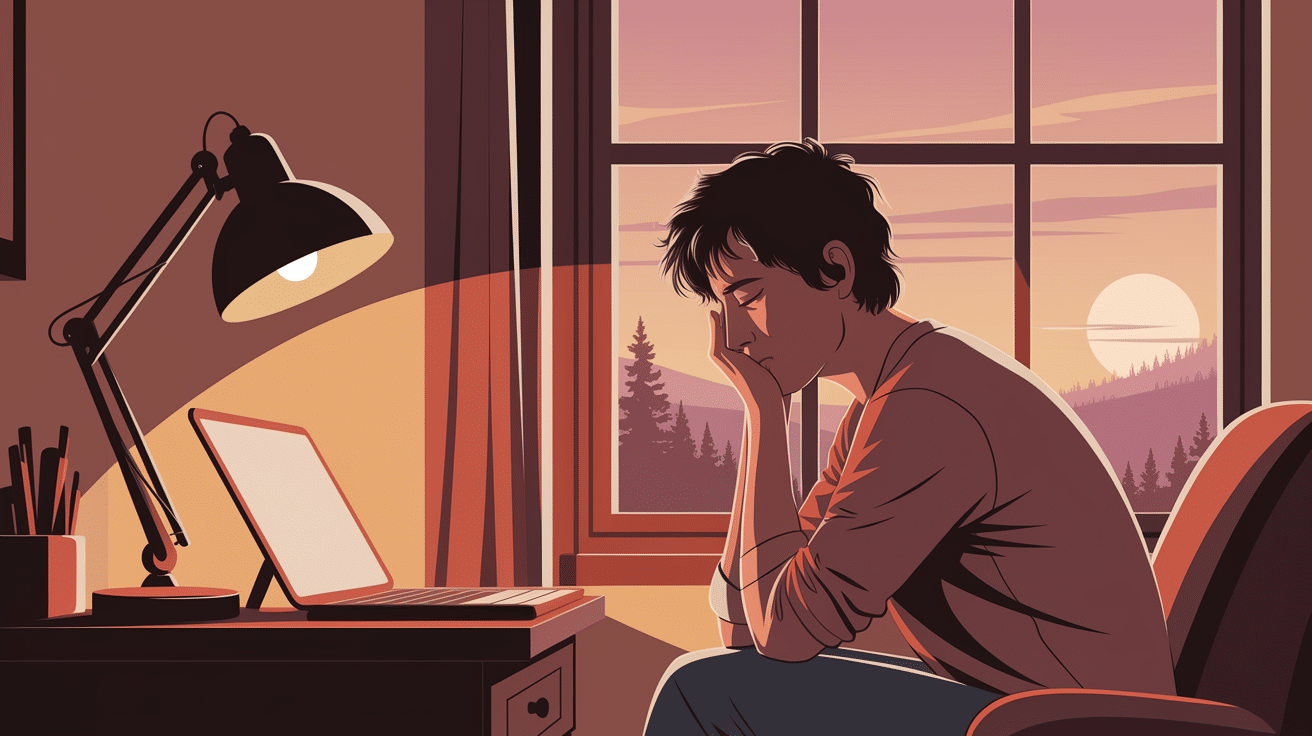
The first step is to come up with a theme or idea for your song. This can be anything that’s on your mind or something you’re feeling. Don’t overthink it—your idea should be simple, and it should be something that feels important to you.
Think about your emotions, experiences, or something you’re passionate about. Here are some examples of simple themes:
- Love: “I miss you”
- Dreams: “I want to make it big”
- Friendship: “Remember the good times”
- Heartbreak: “I can’t let go”
-
Example Idea: Let’s pick “Heartbreak” as our theme. This song is about missing someone after a breakup, capturing the sadness of being apart from a loved one.
Tip: If you don’t know where to start, think about a recent emotion you’ve had. Were you happy, sad, excited, or frustrated? Use that feeling to build your song.
2. Write a Hook (The Catchy Part)
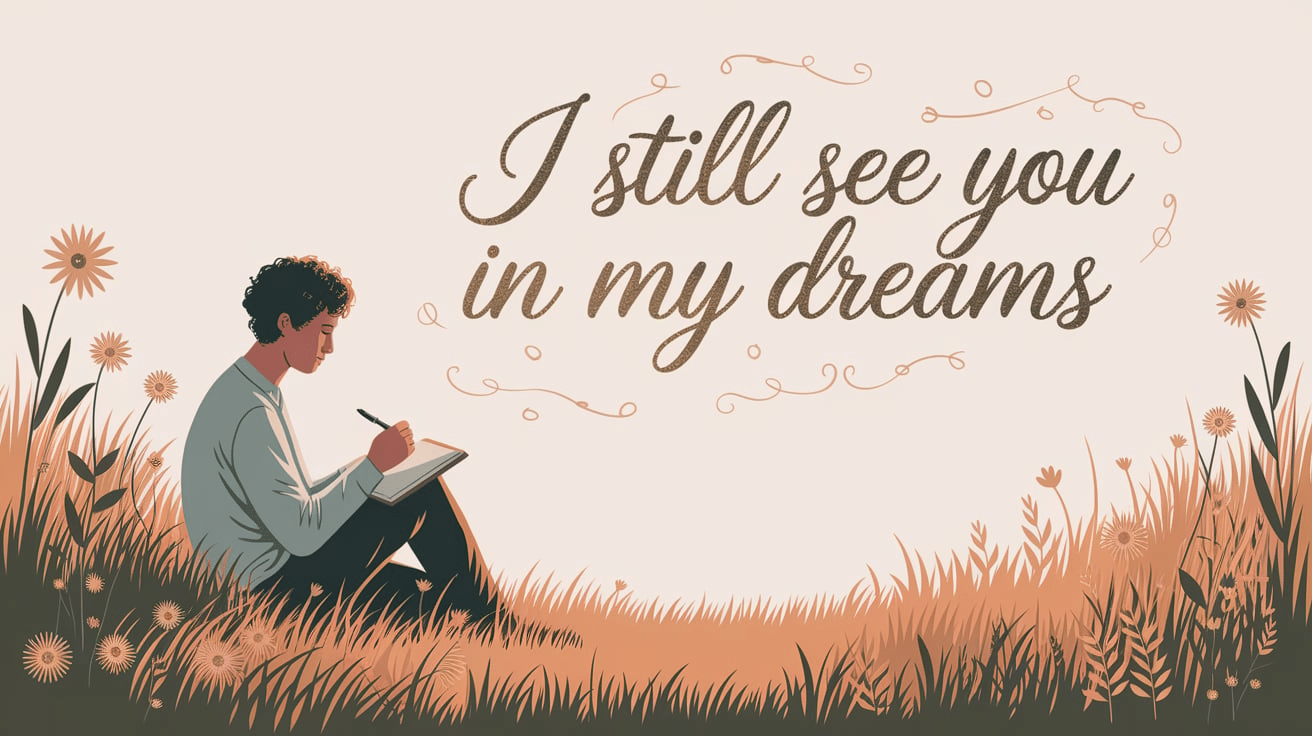
Now that you have your idea, it’s time to write a hook. The hook is the part of the song that sticks with the listener. It’s simple, emotional, and repetitive. This will go in your chorus.
The hook should capture the main feeling or message of the song in just a few words. It’s the emotional heart of the song, and you’ll repeat it in the chorus to make it memorable.
A great example is “Let It Be” by The Beatles. The hook, “Let it be,” is simple, repetitive, and emotional.
It captures a powerful message of letting go of worries and accepting life as it is. The repetition of “Let it be” in the chorus makes it unforgettable, and it’s the line that listeners remember most.
Example Hook:
- Theme:Heartbreak
- Hook:“I still see you in my dreams.”
Don’t worry about making the hook rhyme or sound perfect. Focus on making it real and heartfelt. A hook that feels true to your emotions will always work better than one that just sounds good.
3. Create a Simple Song Structure
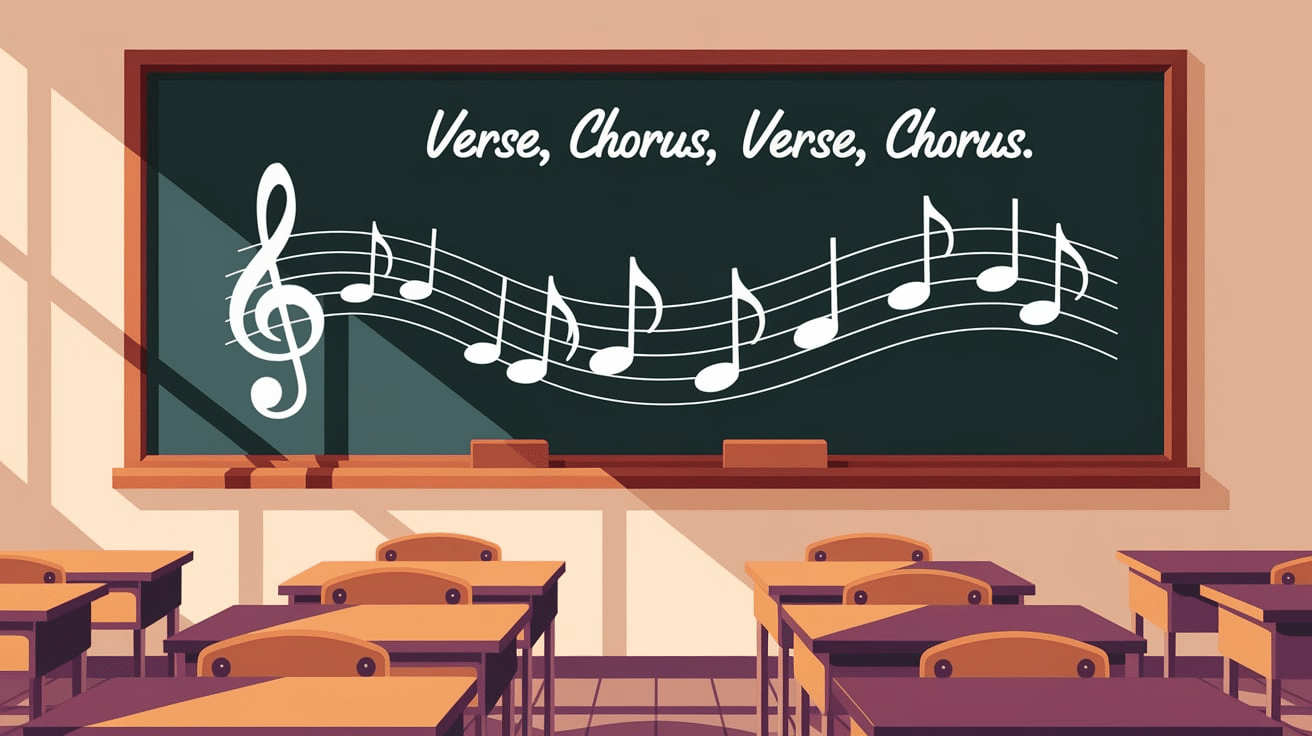
Most popular songs follow a simple structure. For now, we’ll stick to the basic one:
Verse 1 → Chorus → Verse 2 → Chorus → (Optional: Bridge) → Final Chorus
This structure gives your song flow and keeps it easy to follow. The verses tell the story, while the chorus repeats the main idea or emotion. The bridge, if you add one, offers a brief change before returning to the final chorus.
Example Structure:
- Verse 1: Introduce the story of heartbreak.
- Chorus: Repeat the hook and express the main feeling.
- Verse 2: Expand on the story or add more detail to the emotion.
- Chorus: Repeat the chorus with the hook.
Now, we have a clear structure for the song. Let’s move on!
Tip: Start simple with just a verse and chorus. As you become more comfortable, you can add a bridge or outro later to change things up.
4. Write the First Verse

The first verse sets the scene. This is where you introduce the situation or emotion you want to explore. It doesn’t need to be fancy—just focus on describing the feeling or experience clearly.
Write about what’s on your mind. The first verse will introduce the main idea or the background to the story.
Example Verse 1:
“I wake up to an empty bed,
The silence feels like it’s been said,
All the words we never spoke,
Now just memories left to choke.”
In this first verse, we’re setting up the story of waking up alone and feeling the weight of unspoken words and memories after a breakup.
Tip: Don’t stress about it sounding fancy. Imagine you’re telling a story to a friend. If you keep it simple and personal, the emotion will come through stronger.
5. Write the Chorus (Repeat the Hook)
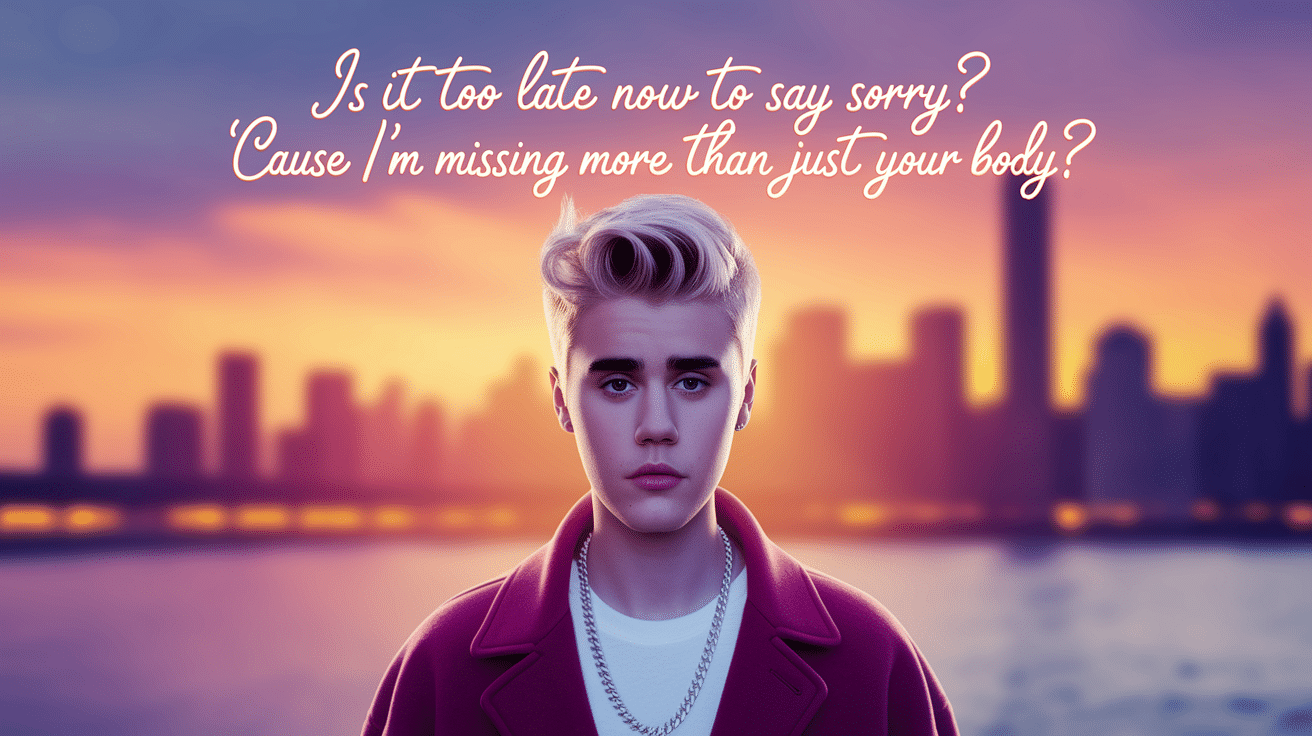
The chorus is where your hook shines. It’s the emotional high point of the song, and it repeats. This is where you bring out the main theme and let it resonate with the listener.
The chorus should repeat your hook, which sums up the main emotion of your song. Make sure it’s simple, easy to sing along to, and emotional.
Example Chorus:
“I still see you in my dreams,
Even when I’m wide awake,
“I still see you in my dreams,
I’m lost in what we couldn’t make.”
In the chorus, we repeat the hook, “I still see you in my dreams,” to really emphasize the feeling of longing and loss.
Tip: Keep your chorus simple and emotional. It should feel like the emotional peak of the song. Repeat your hook in the chorus to make it catchy and emotional.
6. Create a Melody
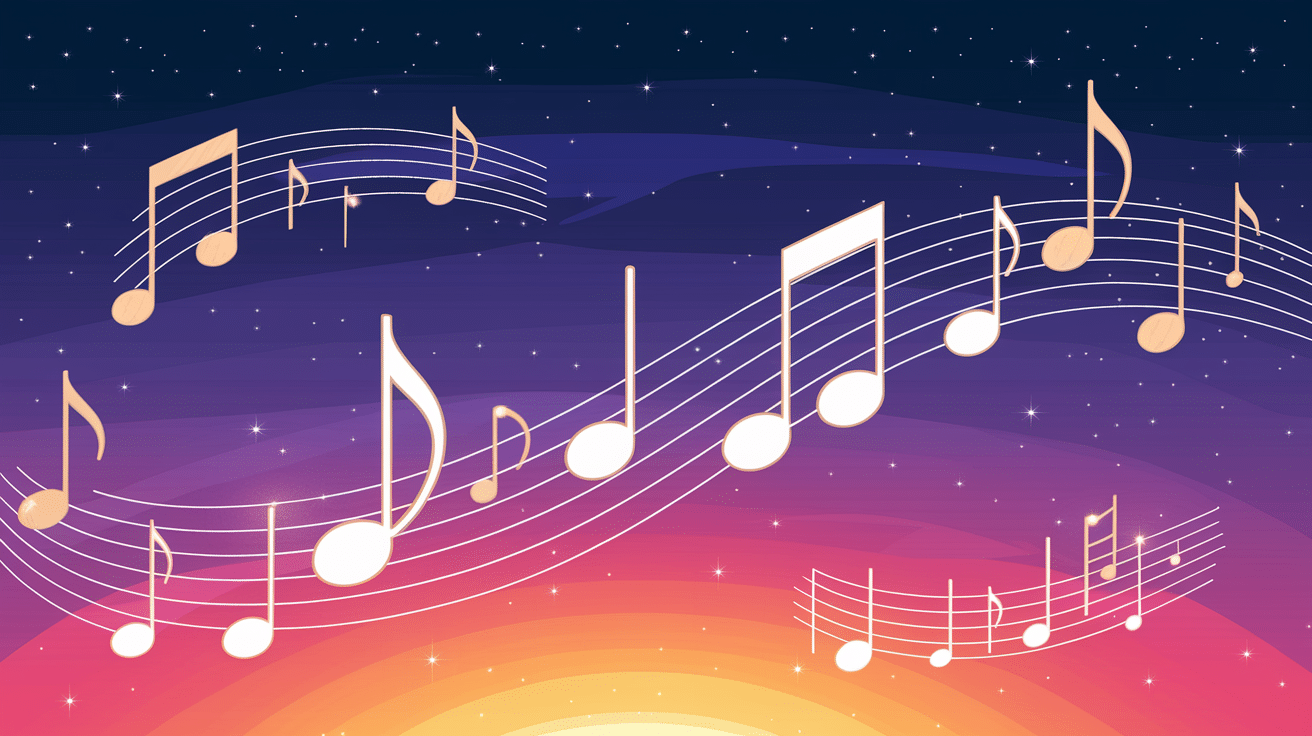
Once you have your lyrics, it’s time to put them to music.
Hum or sing your lyrics out loud. Try to match the melody to the feeling of the song. You can use an instrument like a guitar or piano if you have one, or just tap your hands to create a rhythm.
For the verse, keep the melody slow and soft to match the sadness of the lyrics. You might sing the first verse with a lower, more reflective tone. Make the chorus melody rise a little to build up the emotion.
Here’s a shorter explanation using The Weeknd’s “Blinding Lights”:
Verse Melody
“I’ve been tryna call,
I’ve been on my own for long enough.”
Chorus Melody
“I can’t sleep until I feel your touch.”
The verse melody stays low and steady, matching the calm longing. The chorus melody rises to add emotional intensity, reflecting the song’s emotional peak.
7. Refine Your Song
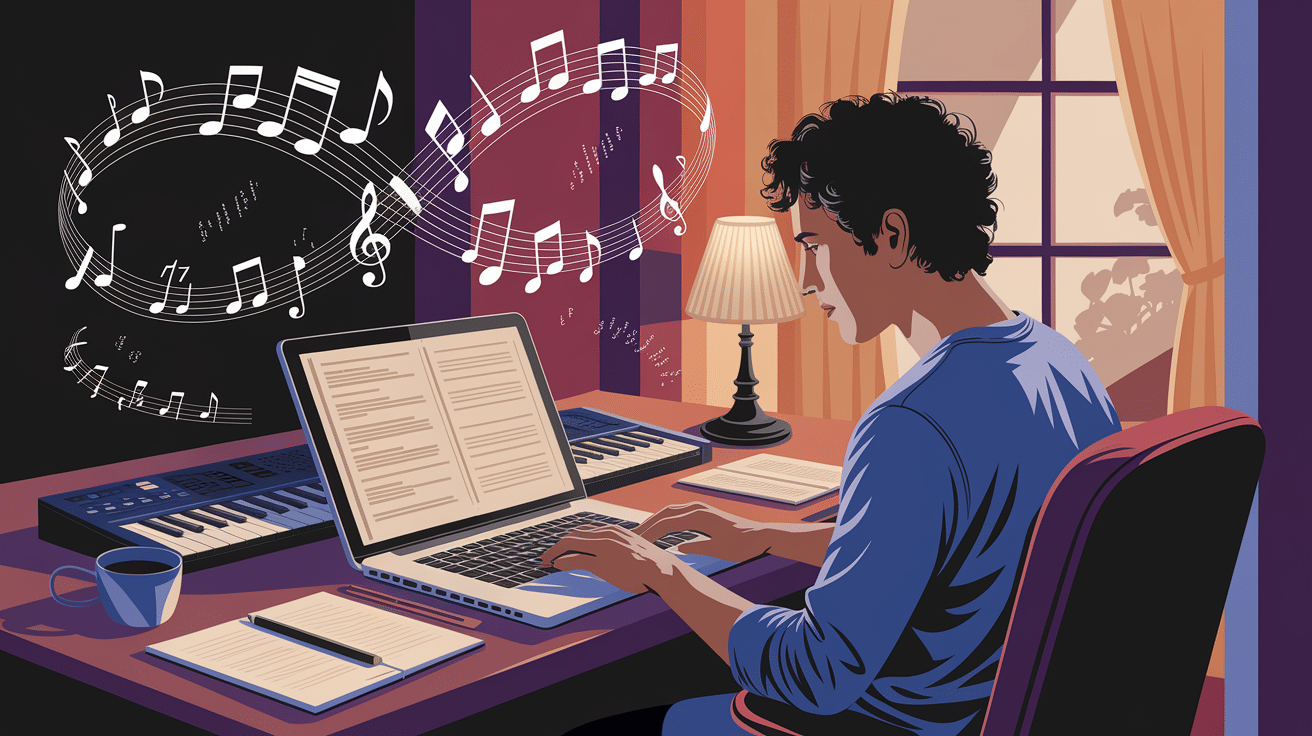
Once you’ve got the basics of the song—lyrics and melody—it’s time to refine it. Sing through the song, and listen carefully to see if anything feels off.
Maybe you’ll need to tweak a line or change a part of the melody. Don’t worry if it’s not perfect right away; refining your song is part of the process.
Listen to your song again after a break, and see if there’s anything you’d like to improve. Change a word, adjust the melody, or add an extra line if needed.
Example of Refinement:
After singing through, you might change the second verse from:
“All the words we never spoke,
Now just memories left to choke.”
To:
“Now just memories left to smoke.”
This small change helps the line flow better and fits the mood of the song more smoothly.
Tip: Take breaks and come back to the song with fresh ears. Listening to it after some time can help you spot areas that need improvement.
Final Song Example
After following all the steps, here’s the complete song
|
Verse 1: Chorus: Verse 2: Chorus: |
And there you have it—a fresh song created just now from scratch! It doesn’t have to be perfect, and you don’t need fancy equipment.
What matters is that you expressed your feelings, and that’s the most important part of songwriting. The more you practice, the better you’ll get, so keep experimenting and have fun with the process.
Helpful Songwriting Books and Learning Resources
If you’re looking to improve your songwriting skills, here are some great books and online resources to guide you through the process:
Songwriting Books:
- “Writing Better Lyrics” by Pat Pattison– Teaches techniques to improve lyric writing, helping you express emotions creatively and effectively.
- “Songwriting: Essential Guide to Lyric Form and Structure” by Pat Pattison– Focuses on song structure, helping you create strong verses, choruses, and rhyme schemes.
- “The Complete Singer-Songwriter” by Jeffrey Pepper Rodgers– A guide for songwriters covering writing, performing, recording, and building a music career.
- “How to Write Songs on Guitar” by Rikky Rooksby– A beginner-friendly book for guitarists, teaching basic songwriting skills and chord progressions.
- “The Craft of Songwriting” by Scarlet Keys– Offers exercises and techniques to spark creativity and help you refine your songwriting skills.
Online Learning Resources
- MasterClass – Songwriting with Alicia Keys: Alicia Keys shares her songwriting process.
- YouTube Channels: Songwriting Simplified, Point Blank Music School
- SongTown: An online platform for Songwriting resources, courses, and community.
Conclusion
Songwriting without experience isn’t just possible – it’s how many of today’s most successful artists got started. The song you create might not top the charts tomorrow, but that’s not the point of beginning this path.
Remember that your first song is exactly that – your first. It won’t be perfect, and that’s perfectly fine.
What matters is that you’ve translated your thoughts and feelings into music, taking that crucial first step that many aspiring songwriters never manage to take.
You’ve given voice to your emotions and experiences in a special way that only you could.
Keep writing, keep experimenting, and most importantly, keep expressing yourself. With each song, you’ll gain confidence and skill, developing your distinctive style along the way.







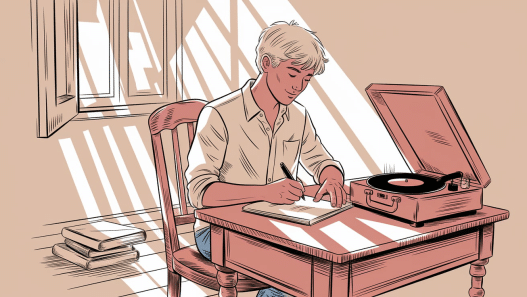
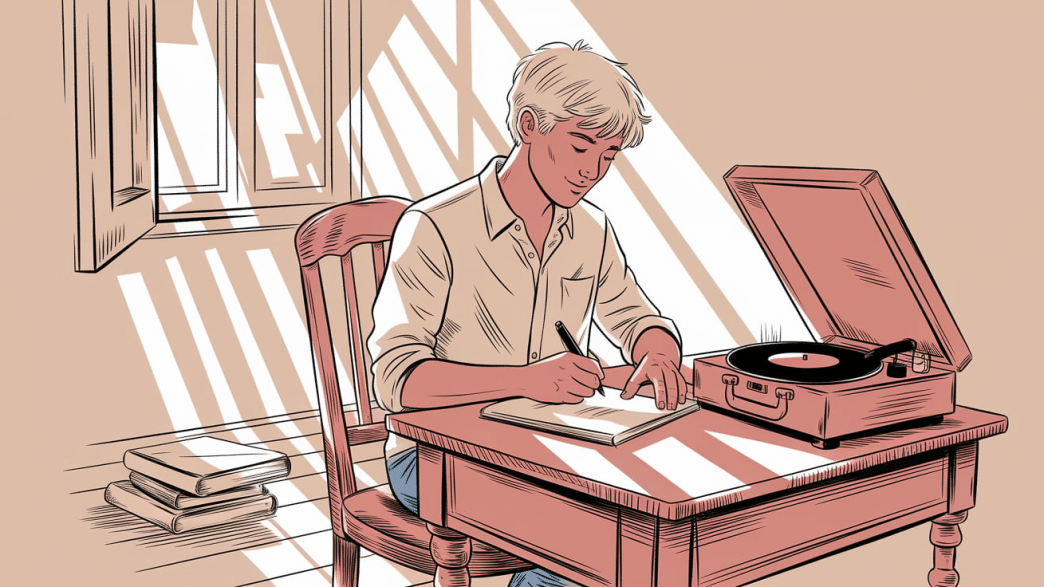


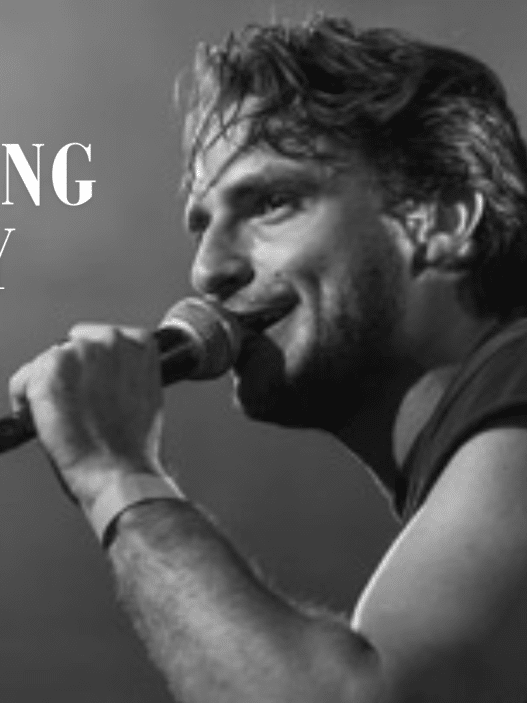
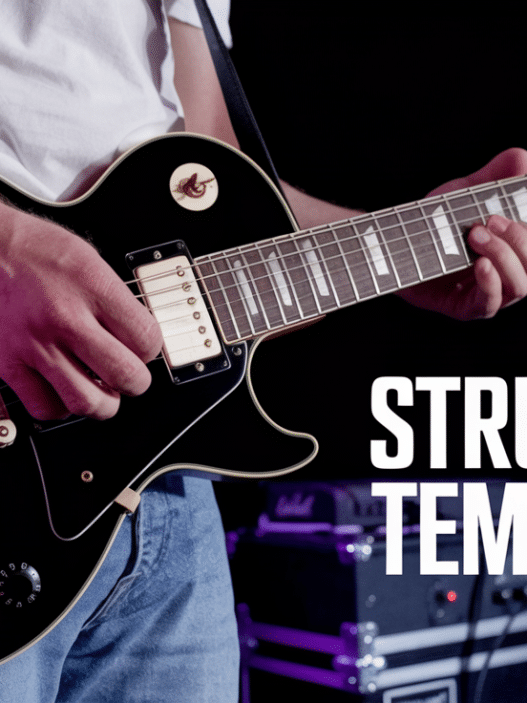
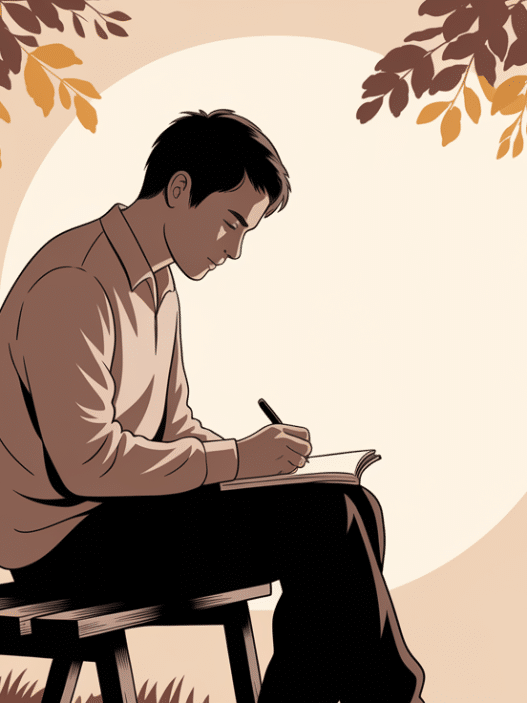

[…] No Experience? No Problem! Learn How to Write a Song Easily […]
[…] No Experience? No Problem! Learn How to Write a Song Easily […]
[…] No Experience? No Problem! Learn How to Write a Song Easily […]